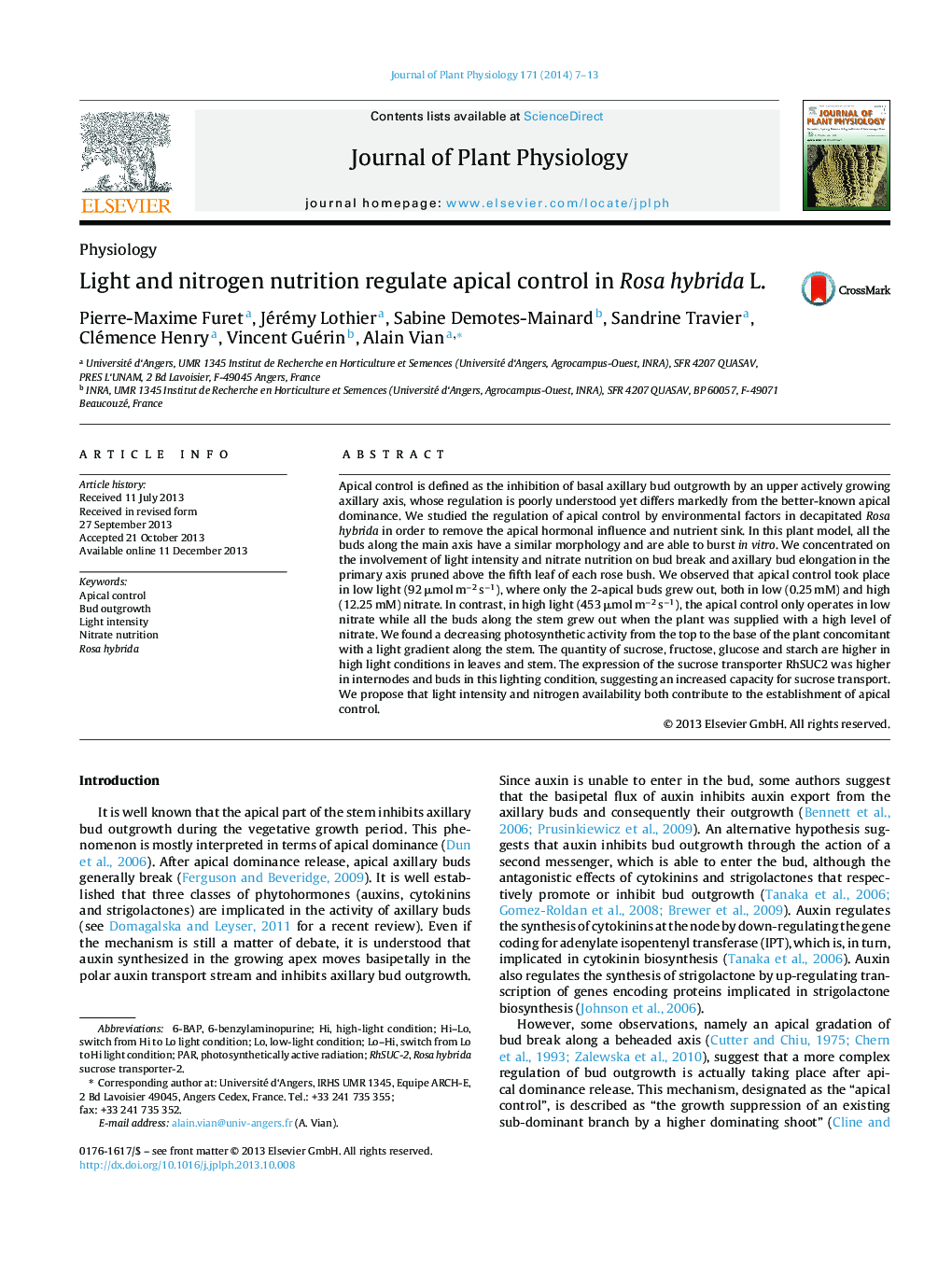| Article ID | Journal | Published Year | Pages | File Type |
|---|---|---|---|---|
| 10876887 | Journal of Plant Physiology | 2014 | 7 Pages |
Abstract
Apical control is defined as the inhibition of basal axillary bud outgrowth by an upper actively growing axillary axis, whose regulation is poorly understood yet differs markedly from the better-known apical dominance. We studied the regulation of apical control by environmental factors in decapitated Rosa hybrida in order to remove the apical hormonal influence and nutrient sink. In this plant model, all the buds along the main axis have a similar morphology and are able to burst in vitro. We concentrated on the involvement of light intensity and nitrate nutrition on bud break and axillary bud elongation in the primary axis pruned above the fifth leaf of each rose bush. We observed that apical control took place in low light (92 μmol mâ2 sâ1), where only the 2-apical buds grew out, both in low (0.25 mM) and high (12.25 mM) nitrate. In contrast, in high light (453 μmol mâ2 sâ1), the apical control only operates in low nitrate while all the buds along the stem grew out when the plant was supplied with a high level of nitrate. We found a decreasing photosynthetic activity from the top to the base of the plant concomitant with a light gradient along the stem. The quantity of sucrose, fructose, glucose and starch are higher in high light conditions in leaves and stem. The expression of the sucrose transporter RhSUC2 was higher in internodes and buds in this lighting condition, suggesting an increased capacity for sucrose transport. We propose that light intensity and nitrogen availability both contribute to the establishment of apical control.
Keywords
Related Topics
Life Sciences
Agricultural and Biological Sciences
Agronomy and Crop Science
Authors
Pierre-Maxime Furet, Jérémy Lothier, Sabine Demotes-Mainard, Sandrine Travier, Clémence Henry, Vincent Guérin, Alain Vian,
